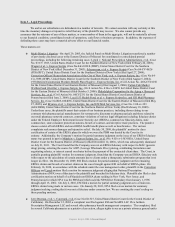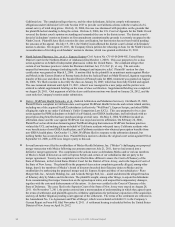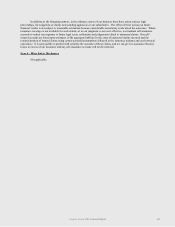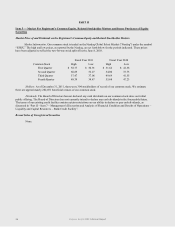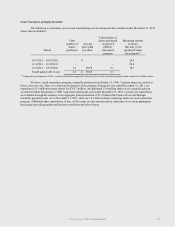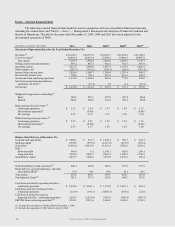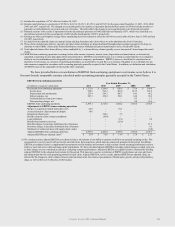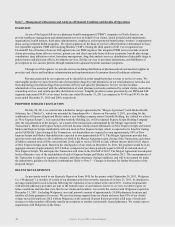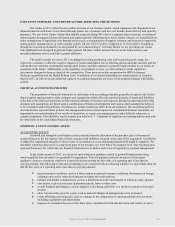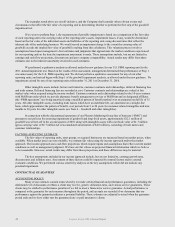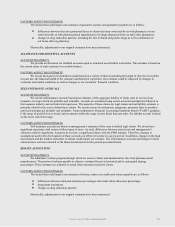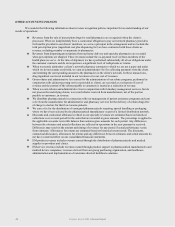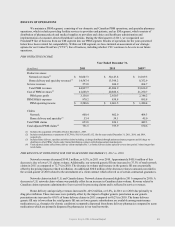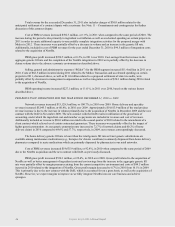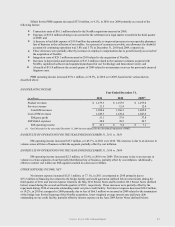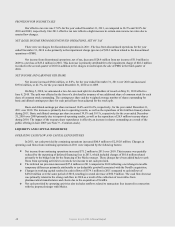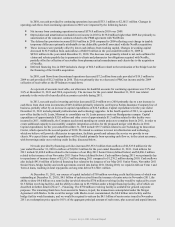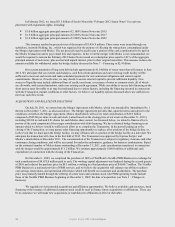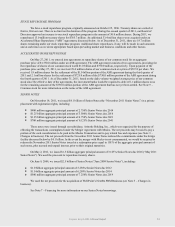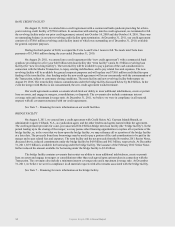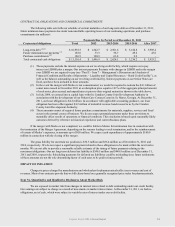Express Scripts 2011 Annual Report Download - page 45
Download and view the complete annual report
Please find page 45 of the 2011 Express Scripts annual report below. You can navigate through the pages in the report by either clicking on the pages listed below, or by using the keyword search tool below to find specific information within the annual report.
Express Scripts 2011 Annual Report 43
FACTORS AFFECTING ESTIMATE
The factors that could impact our estimates of guarantee expense and guarantees payable are as follows:
differences between the rates guaranteed by us to clients and rates contracted by us with pharmacies in our
retail networks or with pharmaceutical manufacturers for drugs dispensed from our mail order pharmacies
changes in drug utilization patterns, including the mix of brand and generic drugs as well as utilization of
our home delivery pharmacy
Historically, adjustments to our original estimates have been immaterial.
ALLOWANCE FOR DOUBTFUL ACCOUNTS
ACCOUNTING POLICY
We provide an allowance for doubtful accounts equal to estimated uncollectible receivables. This estimate is based on
the current status of each customer’s receivable balance.
FACTORS AFFECTING ESTIMATE
We record allowances for doubtful accounts based on a variety of factors including the length of time the receivables
are past due, the financial health of the customer and historical experience. Our estimate could be impacted by changes in
economic and market conditions as well as changes to our customers’ financial condition.
SELF-INSURANCE ACCRUALS
ACCOUNTING POLICY
We record self-insurance accruals based upon estimates of the aggregate liability of claim costs in excess of our
insurance coverage which are probable and estimable. Accruals are estimated using certain actuarial assumptions followed in
the insurance industry and our historical experience. The majority of these claims are legal claims and our liability estimate is
primarily related to the cost to defend these claims. We do not accrue for settlements, judgments, monetary fines or penalties
until such amounts are probable and estimable. Under authoritative Financial Accounting Standards Board (―FASB‖) guidance,
if the range of possible loss is broad, and no amount within the range is more likely than any other, the liability accrual is based
on the lower end of the range.
FACTORS AFFECTING ESTIMATE
Self-insurance accruals are based on management’s estimates of the costs to defend legal claims. We do not have
significant experience with certain of these types of cases. As such, differences between actual costs and management’s
estimates could be significant. Actuaries do not have a significant history with the PBM industry. Therefore, changes to
assumptions used in the development of these accruals can affect net income in a given period. In addition, changes in the legal
environment and the number and nature of claims could impact our estimate. The self-insurance accruals and changes in those
estimates have not been material to the financial statements for the periods presented herein.
REBATE ACCOUNTING
ACCOUNTING POLICY
We administer a rebate program through which we receive rebates and administrative fees from pharmaceutical
manufacturers. The portion of rebates payable to clients is estimated based on historical and/or anticipated sharing
percentages. These estimates are adjusted to actual when amounts are paid to clients.
FACTORS AFFECTING ESTIMATE
The factors that could impact our estimates of rebates, rebates receivable and rebates payable are as follows:
differences between estimated allocation percentages and actual rebate allocation percentages
drug patent expirations
changes in drug utilization patterns
Historically, adjustments to our original estimates have been immaterial.


